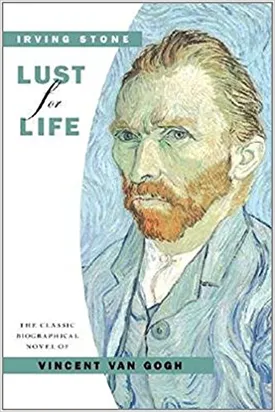Lust for Life, by Irving Stone, is a classic biographical novel that tells the story of the renowned Dutch post-Impressionist artist, Vincent van Gogh. From his tumultuous childhood to his rise as one of the art world’s most influential artists, Stone explores the life and mind of an obsessive, passionate, and ultimately, troubled genius.
First published in 1934, Lust for Life begins with van Gogh's childhood in the quiet village of Zundert, Netherlands. As the eldest son of a minister, Vincent's strict Calvinist upbringing was strongly rooted in religion. Despite his upbringing, Vincent found faith difficult to accept and often struggled with bouts of depression and anxiety, due in part to his father's stern discipline.
Despite his hardships, Vincent's love of art and nature flourished. As soon as he was able, he enrolled in a local institute to study art. Within a few years, he relocated to Holland and studied art under the guidance of the Dutch masters, honing a style influenced by the likes of Rembrandt. This period of his life was marked by an intense inner struggle between his love of art and the demands of his religion.
After van Gogh's family had fallen apart and he had lost his faith, he moved to Paris, where he embraced a new style of Expressionism and came into contact with contemporaries Paul Gauguin and Emile Bernard. Here, van Gogh underwent a second transformation, pushing his art to extreme limits, discarding the subtlety of his earlier works and embracing a wild, intense form of painting. Scarcely eating or sleeping, his mind and body both suffered from this intensity and his psychological state began to deteriorate.
Vincent's love affairs were not immune from his suffering. He had a brief affair with his boyhood friend Eugenie Loyer and later with a fellow artist named Marguerite Ginoux. In the midst of his mental anguish, he maintained a strong relationship with his brother Theo, exhibiting his art to him and seeking support, financial and otherwise. Later, van Gogh journeyed to Arles and Provence where he completed a number of his iconic works.
Although his career was ultimately overshadowed by his troubled mental health and his inability to find success or recognition during his lifetime, Vincent's brilliant paintings live on. In the pages of Lust for Life, Stone paints a powerful and vivid portrait of a man whose unrelenting passion, dedication and spirit still stand as an example of courage and determination. We can only hope that lust of life was a source of comfort and solace for van Gogh ultimately.

